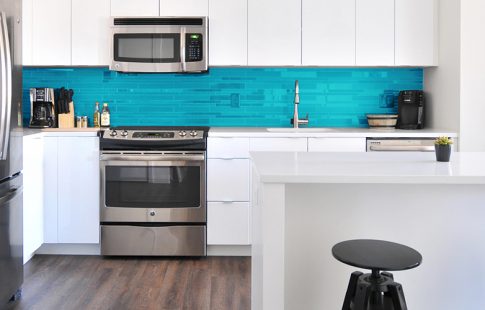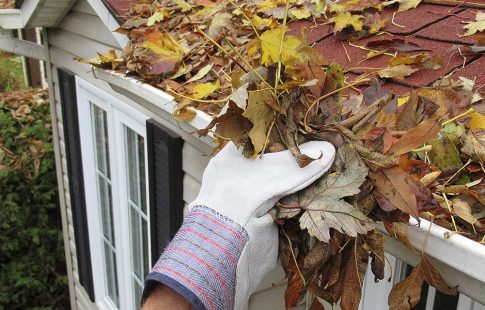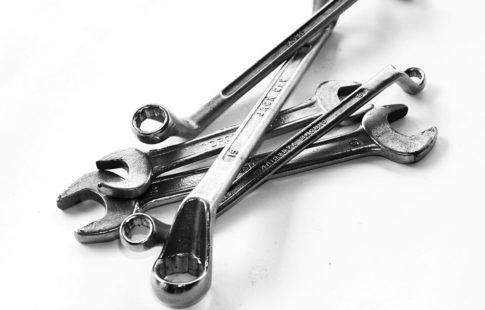The weather has turned cold, and you may be stressing about your heating bills. But if you put in a little work into winterizing your home now, you might be able to save money all winter long while enjoying a warm and comfortable house. Here are eight cost-effective tips to winterize your home.
1. Upgrade to an efficient furnace
Luckily, upgrading your furnace is not something you have to do every year. But if you know that your furnace is getting old, you could save a lot of money in the long run by installing a newer, high-efficiency unit. Winterizing your home with a new furnace could also improve your home’s value. You’ll save on energy costs and you may be eligible for a federal tax credit. For more information, check out ENERGY STAR®’s suggestions on efficient furnaces.
2. Check your thermostat
Try turning down your thermostat every time you leave the house. “You can save as much as 10% a year on heating and cooling by simply turning your thermostat back 7°–10°F for 8 hours a day from its normal setting,” says the Department of Energy. (They add that the savings are higher in “milder climates.”) Think about this the next time you’ll be away from home for a while or sleeping under a warm blanket. After all, why pay for heat when you don’t need it?
3. Change your furnace filters
This one’s easy to forget but important to do when winterizing your home: Replace your furnace filters once a month during heating season. Dirty filters can cut off airflow, which makes your furnace work harder and also can drive up your energy bills.

Projects piling up?
A Mr. Cooper Home Equity Loan can boost your home improvement budget.
4. Enhance your insulation
To help reduce bills more, consider adding more insulation on your attic floor or basement ceiling. ENERGY STAR says a good insulation level for attics in the North is 16-18 inches of R-49 insulation or better. If you’re in the South, they advise 13-14 inches of R-38 insulation or better. One simple rule of thumb they add? If your insulation is even with your attic floor’s joists, or lower, it’s time for more.
Think about insulating your water pipes with pipe sleeves, too. In addition to saving energy on hot water lines, they can lower the chance of frozen pipes carrying hot or cold water.
5. Install storm doors and windows
Another way to possibly increase a home’s energy efficiency is adding storm doors and windows to minimize drafts. Energy.gov says that “on average, low-e storm windows can save you 10%–30% in heating and cooling costs.” If you’re budget conscious, consider this option before replacing an old single-paned window. It can also be an easy DIY project if you’re handy. ENERGY STAR provides more suggestions on storm windows in their list of energy efficient products.
6. Winterize hose bibs
Before the first freeze in your area, disconnect and drain your hoses. Experts also say to turn off and drain the water lines that feed the hoses. Consult a plumber for the best tips for your home. This could prevent a burst pipe and costly repairs when temperatures drop. You can also add an outdoor faucet cover to guard against the cold for good measure.
7. Seal your ducts
Don’t forget this tip for winterizing your home: Ensure that you have properly sealed ducts throughout your heating and A/C systems. Sealed ducts prevent heat loss and also protect against mold and dust. This, along with insulating your ducts, can boost your heating and cooling systems’ efficiency by up to 20%, according to ENERGY STAR.
8. Turn down your water heater
A final tip for winterizing your home: Check the temperature on your water heater. Lowering the temperature to around 120o F is a small adjustment that could make a difference on your billing statement. According to the EPA, it can drop the cost to heat water 6–10%.
Tradenames and trademarks used in this blog post are the property of their respective owners. Nationstar Mortgage LLC d/b/a Mr. Cooper is not affiliated, associated, or sponsored by any of these owners. Use of these names and trademarks is not intended to and does not imply endorsement, but is for identification purposes only. Information provided does not necessarily represent the views of Mr. Cooper. Information is subject to change without notice.







